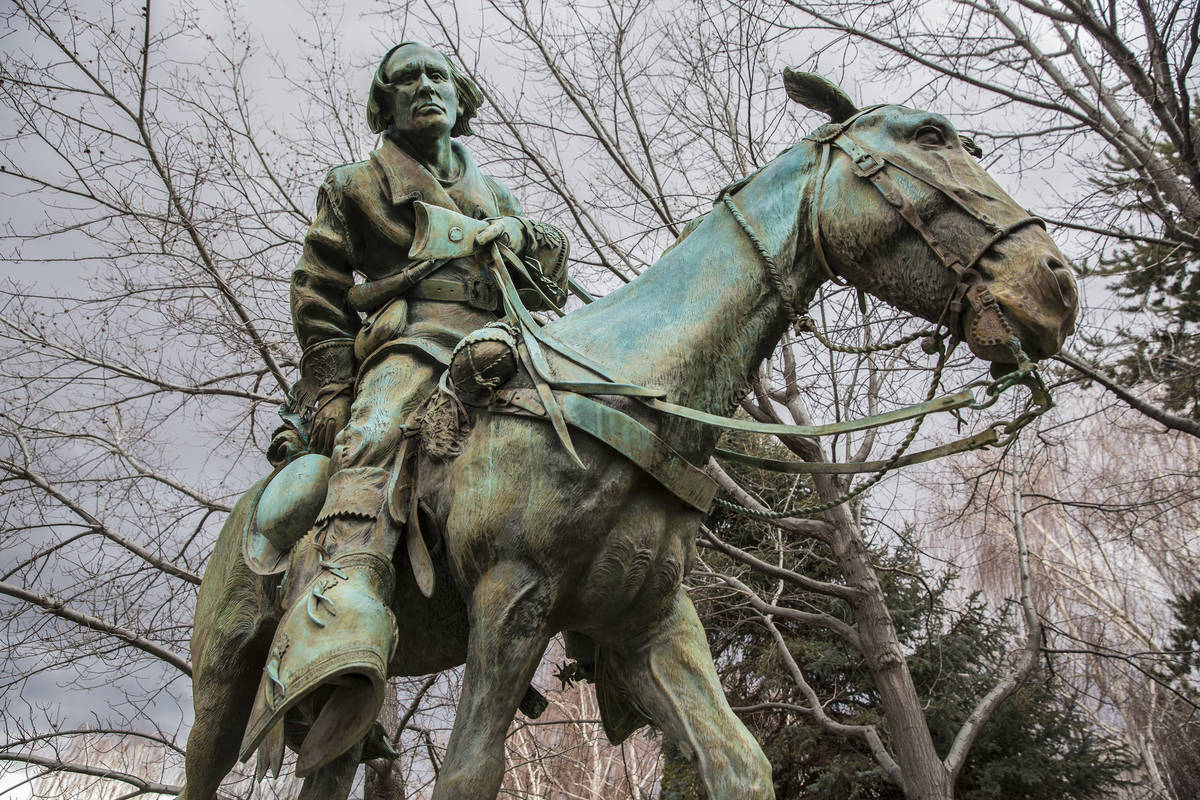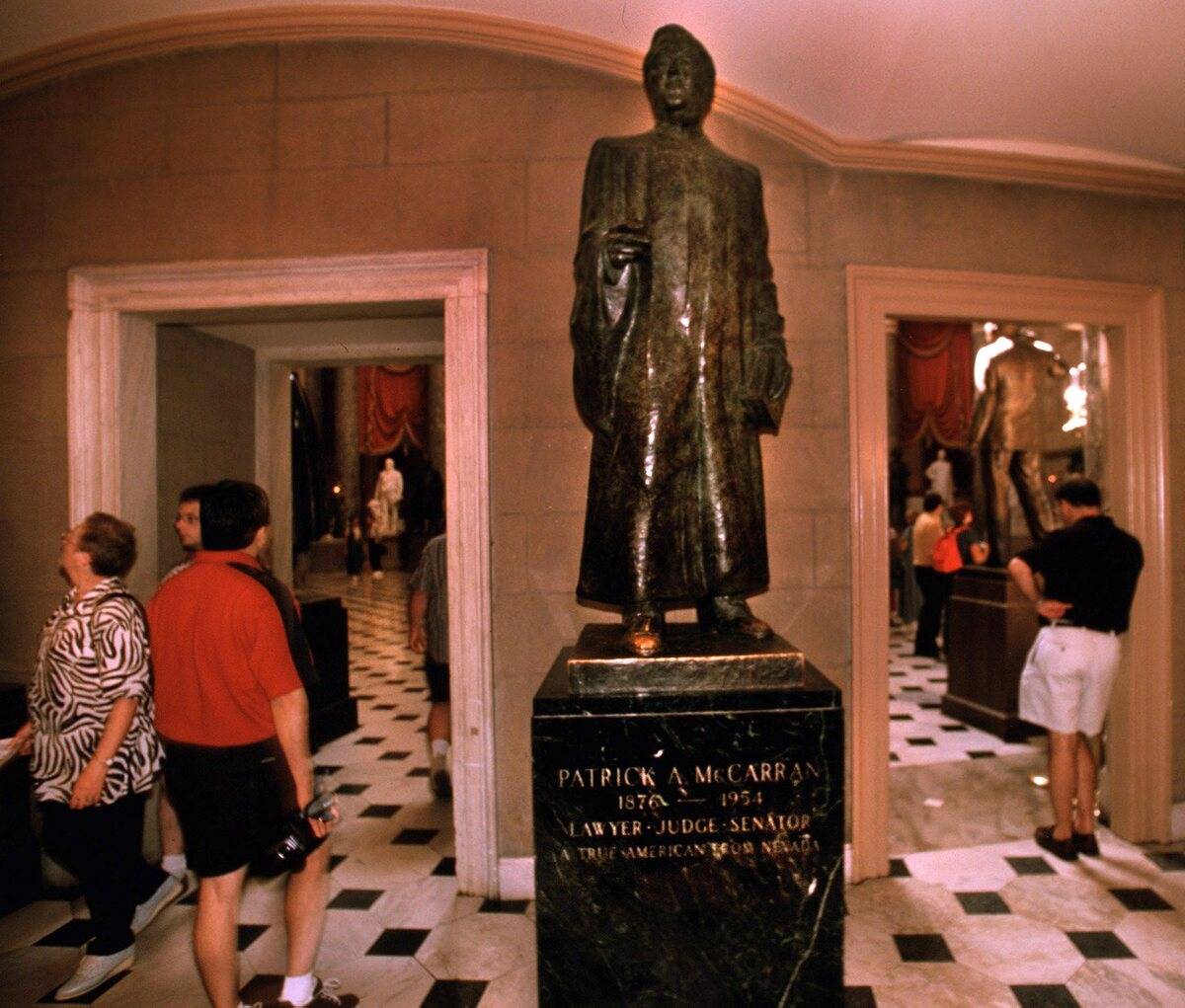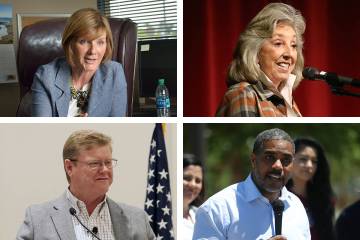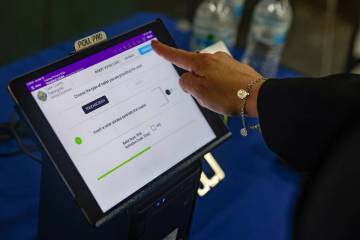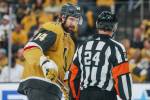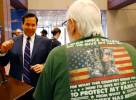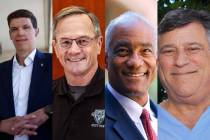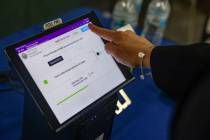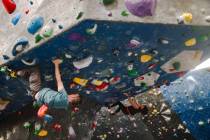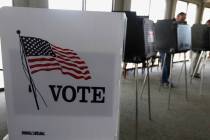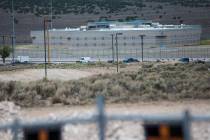Experts weigh in on Nevada’s historical monuments, McCarran and Carson
Nevada Humanities held a virtual panel discussion Thursday about the national debate over historical monuments and its relevance in Nevada, including controversy over figures such as Pat McCarran and Kit Carson.
The conversation — moderated by Claytee White, director of UNLV’s Oral History Research Center — included a panel of guest experts: UNLV associate professor of history Michael Green, historian and author Alicia Barber, Las Vegas artist and UNLV instructor Emily Budd, and activist and artist Fawn Douglas.
“We’re here today to talk about monuments and how they’re being torn down in a lot of cities across the country today,” White said. “So I want to know if we’re destroying history and if that even makes a difference here in Nevada.”
Nevada Humanities — with offices in Las Vegas and Reno — is a nonprofit humanities council affiliated with the National Endowment for the Humanities.
Barber said Nevadans are listening to the national conversation. She said Black Lives Matter and other associated social justice movements have inspired many to look at structures, power dynamics and systemic racism “that shaped our landscape.”
She said there’s a need to ask whether confederate memorials represent the community.
Budd said she looks at a monument as “something that is temporary and should reflect social change.”
Green said discussions in Nevada are not as much about monuments as about “things that do reflect a historical moment or attitude.”
Earlier this month, the Clark County School Board voted 5-1 to rename Kit Carson Elementary School in Las Vegas.
Carson — a frontiersman, guide and soldier — “played a pivotal role in the settlement of the West during the 19th century,” according to school board meeting materials. He’s also the namesake of a river in Northern Nevada and the state’s capital city.
“However, Kit Carson has a conflicted legacy,” according to the meeting materials. “Mr. Carson was responsible for the cruel treatment and deaths of hundreds of Navajo Indians, most notably in the 1864 deportation and attempted ethnic cleansing of the Navajo people in what is known as the ‘Long Walk of the Navajo.’”
And in June, UNLV removed the statute of Hey Reb! — the university’s mascot — that was in front of the Richard Tam Alumni Center after concerns raised by students, including the Native American Student Association.
A Change.org petition seeking a new mascot reads: “The mascot, originally named ‘Beauregard’ after the Confederate general who fired the first shots of the Civil War, presents a public image that runs counter to our core values and UNLV’s mission to become the leading multicultural university in the United States.”
Douglas, a member of the Las Vegas Paiute Tribe, talked during the virtual forum about the Hey Reb! statue, and also said a caricature of Beauregard the Wolf — UNLV’s original mascot — that was displayed on a floor at the university’s Marjorie Barrick Museum of Art has also been recently removed.
The caricature was removed about a month ago, university spokesman Tony Allen confirmed Thursday.
Douglas said she feels statues that are removed should live somewhere — such as a sculpture garden or museum — and the true history should be taught with context. “It’s a very ugly history. And as Americans, this is all of our history and we need to discuss it.”
Fawn said every time she passed the Hey Reb! statute at UNLV, she saw a gleaming symbol of white supremacy, and said she was saddened when she looked into the history.
“There’s so many students who have come through here and been like, ‘Wow, this is not the place for us. This place is racist. We need to go. We obviously do not belong here,’” she said.
Each U.S. state can put up two statutes in the National Statuary Hall Collection in the U.S. Capitol Building, Green said, and one of Nevada’s is of former U.S. Sen. McCarran, placed in 1960. Nevada’s other statue is of Sarah Winnemucca, which was placed in 2005.
Democratic members of the Nevada’s congressional delegation have pushed for the McCarran statue to be replaced and for renaming McCarran International Airport in Las Vegas.
“While Senator McCarran fought for workers’ rights and sponsored legislation that helped shape the modern air travel industry, his dark legacy of virulent racism, anti-Semitism, and xenophobia have no place representing Nevada in the United States Capitol,” the delegation wrote in a June letter to Gov. Steve Sisolak and state legislative leaders.
McCarran wanted to reduce the number of displaced people from World War II who could come to the U.S. and opposed Jewish appointees to government positions, Green said.
There are important figures in U.S. history who had a dark and troubling side, Green said, but the balance is also putting them in their time. But McCarran’s anti-Semitic views are not acceptable at any time, he said. “It is a lot harder to justify the pro side of the ledger for Pat McCarran.”
Either way, a name change wouldn’t erase the McCarran history, Green said.
Contact Julie Wootton-Greener at jgreener@reviewjournal.com or 702-387-2921. Follow @julieswootton on Twitter.



